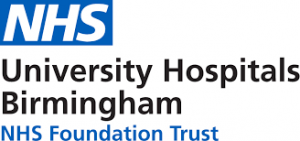Learning from one renal unit’s transformation in response to COVID-19

Authors
Jenny Pinney and Clare Pattenden
Summary of beneficial changes:
- Rapid communication to maintain balance of work across inpatient areas
- Team ‘bubble’ approach to build morale and reduce cross staff sickness
- Continued change to the in-patient footprint to accommodate the differing case load and maintain inpatient capacity
Inpatient footprint
Peak COVID crisis
- Merging of ward based areas to a larger inpatient footprint across specialties meant we could run three areas; a HOT COVID ward, a COLD area for our most vulnerable patients with well defined non COVID diagnoses, and an AMBER area with patients who were waiting for swab results, who did not present primarily with COVD symptoms but had some features of the disease.
- Dialysis provision for inpatients in the HOT ward and the AMBER area received dialysis at the bedside to avoid movement of patients.
- Suspected COVID patients were kept in side rooms. Patients were only cohorted into bays if they were either all COVID positive or all COVID negative. Patients who were swab negative but with a remaining clinical suspicion of COVID were kept in side rooms.
The post COVID phase
- As there is a low level of on-going COVID we continue to run a smaller HOT area which is a small section of a ward sealed off from the rest of the ward running independently with staff defined for that area and a different entrance/exit and drugs trolley/ staff room.
- Patients admitted with possible COVID are assessed in a defined room within the HOT area. The patient is rapidly moved without exposure to any other patients when the swab result and clinical assessment has deemed the patient should be moved to the non COVID area or moved within the COVID area if swab positive. Rapid testing has meant this process can now happen within hours.
- Patients admitted who are not suspected as COVID are assessed in the renal assessment unit in side rooms and triaged into an AMBER area or COLD area based on risk.
Staffing models
- At the outset of the pandemic we had approximately 25% of medical staff off sick with symptoms of COVID. This has reduced over time but there remains a low level of COVID related sickness.
- Medical staff were rapidly pooled into one much larger team to enable cross cover for sickness. The renal medical, renal surgical and vascular surgical departments contributed to pooled rotas. Academic staff were drafted in to support the service.
- Staff were asked to review the occupational health guidance for exposure and pooled into different areas. Medical staff at high risk were taken out of the in-patient service and provided support maintaining telephone clinics, low risk face to face out patient services for emergency review and advice and guidance for other trusts/ GP services.
- All inpatient facing staff were moved onto 4 days on/off 12 hour shifts. With a much greater consultant presence to support the junior staff and make rapid decisions to improve patient flow. The two staff groups operated as ‘bubbles’ to avoid cross contamination and reduce staff sickness.
- Some staff were re-deployed to other areas such as the Acute Medical Unit and critical care.
- We ran with extra capacity of doctors on the ward which meant sickness could be absorbed and people working in areas they are not accustomed to would have time to orientate.
- Two meetings per day were convened across the trust to discuss gaps in staffing and move medical staff into areas of greatest need.
- Annual leave initially was cancelled but as the pressure eased all staff were encouraged to take leave to rest however any ‘lost’ leave will be either carried forward or remunerated.
- Rapid communication was central to effective working. A WhatsApp group was set up for all the juniors working within the pooled rotas and was used as a way of recognising if certain areas of the service required extra support. Consultants in charge of rotas were in the group to be able to move staff around.
- A contacts sheet was also available so doctors could be contacted via their mobile phone to allocate staff to the different areas.
- During peak COVID medical staff worked in either HOT or COLD areas. Once the HOT ward reduced to a smaller area a defined junior was allocated to HOT patients. The consultant would mix but the ward round went from the COLD end and finished in the HOT end.
- Once the case mix started to change back to less COVID, the focus needed to change towards expanding our outpatient areas. A much smaller pool of consultants stayed in the 4 day in-patient model and more were then available for regular working hours to support the non patient facing staff.
- Junior doctors stayed on the 4 day model until the end of June.
- With an on-going small stream of COVID and increasing non COVID work, new rotas have been configured to encompass more support out of hours at both junior doctor level and consultant. We have maintained the same team approach for on-call with all levels in the team working on the same days Monday –Thursday and Friday – Sunday now we are running a 7 day consultant led service with daily ward rounds and rapid review post admission.
Key messages
- Rapid communication to maintain balance of work across inpatient areas
- Team ‘bubble’ approach to build morale and reduce cross staff sickness
- Continued change to the inpatient footprint to accommodate the differing case load and maintain in patient capacity.
